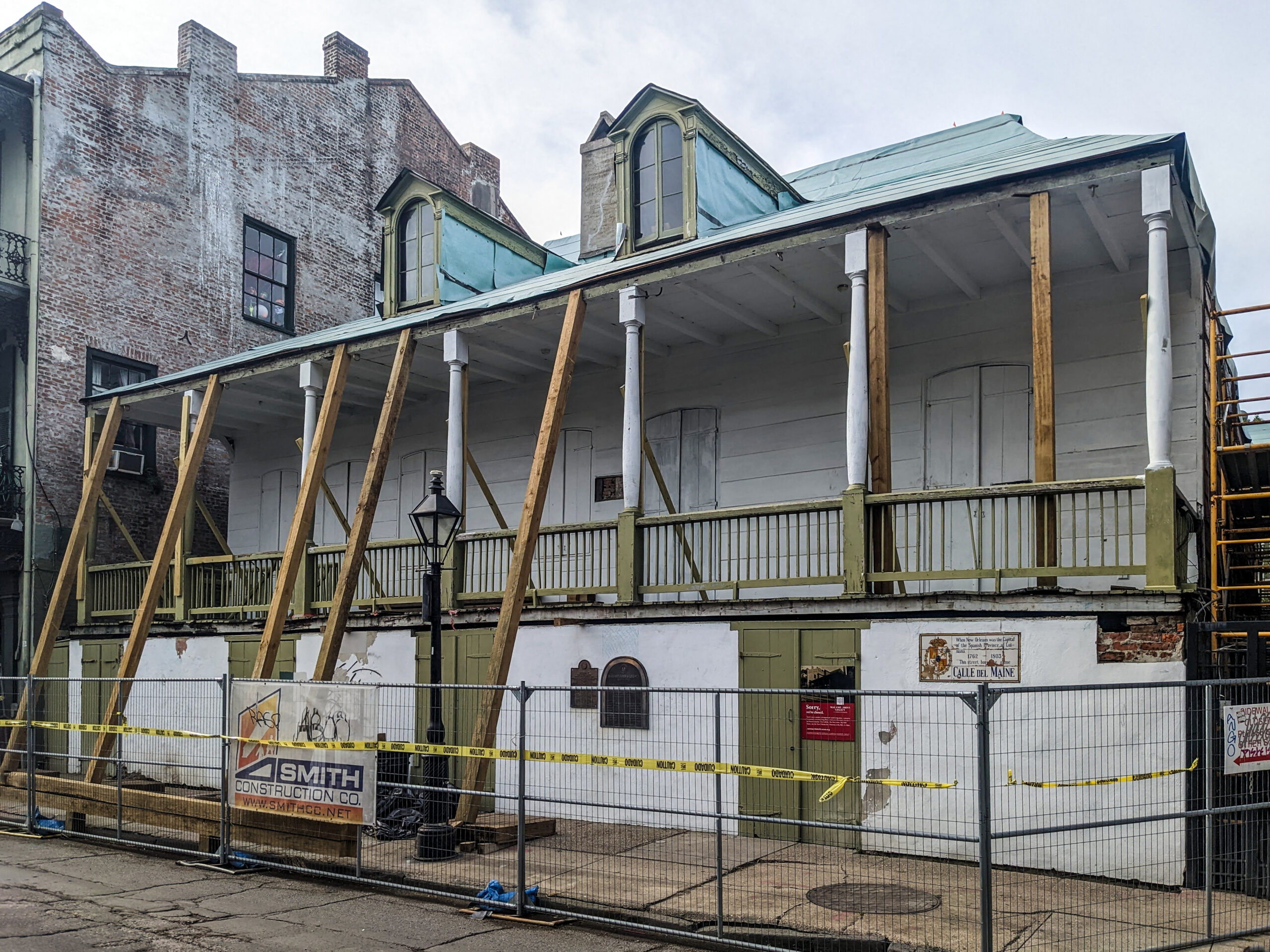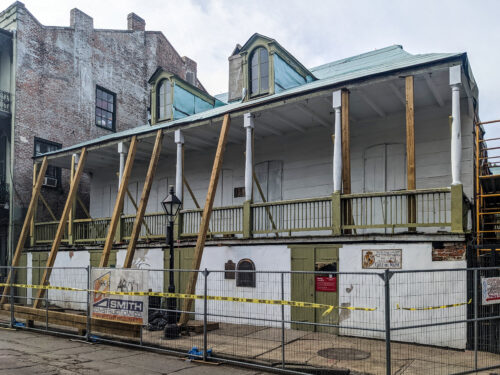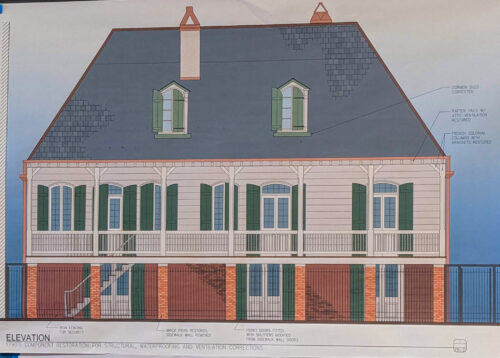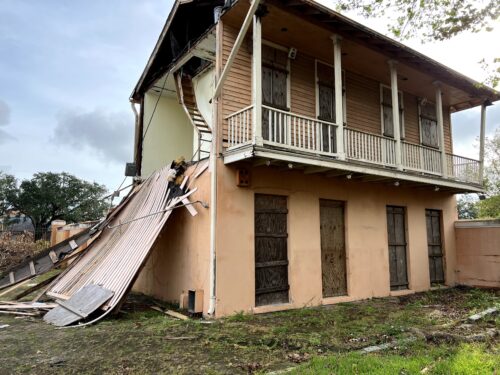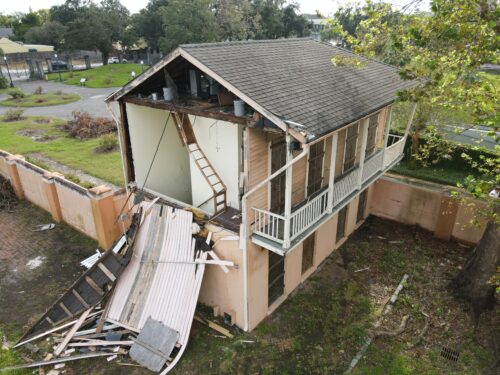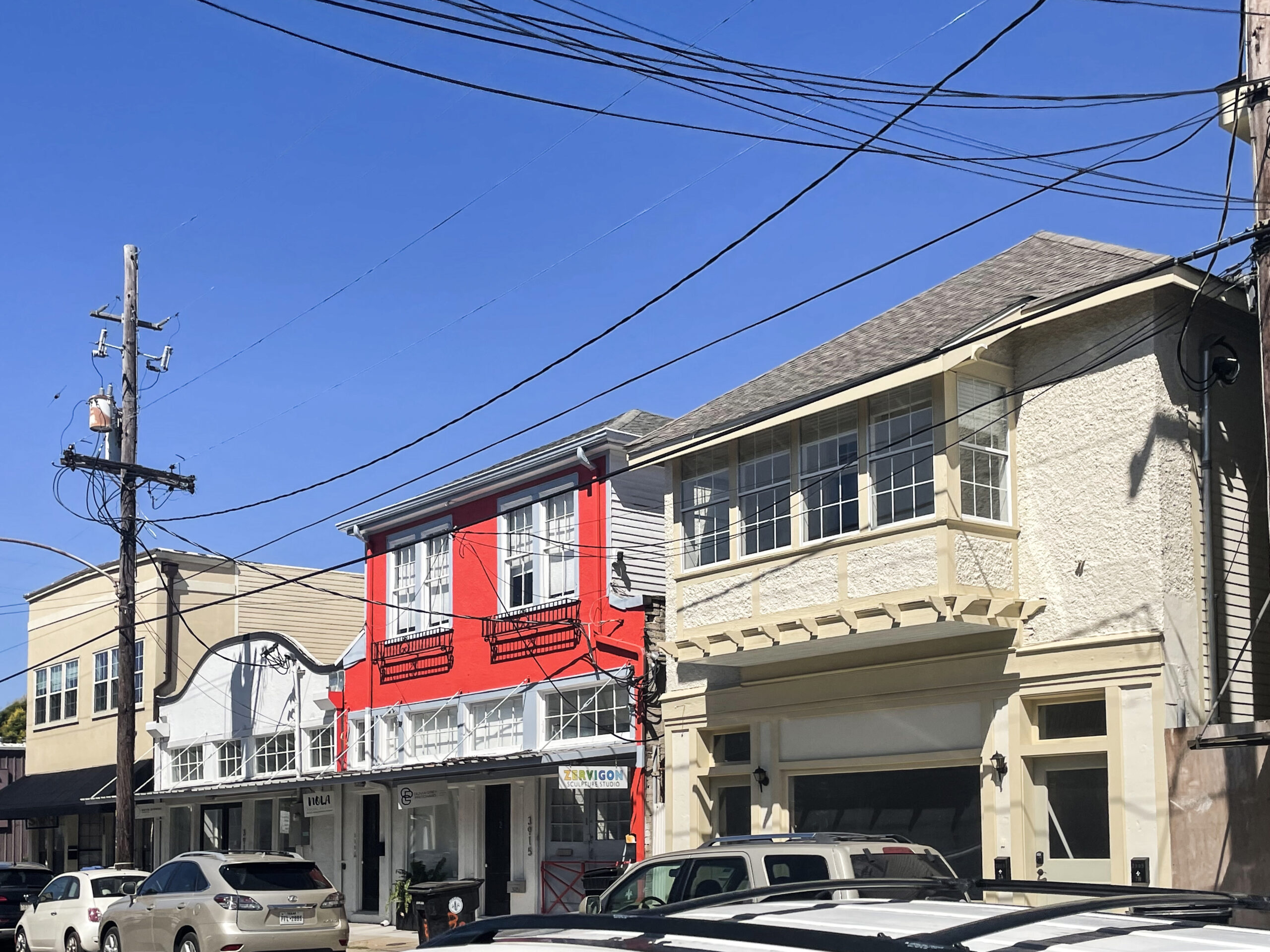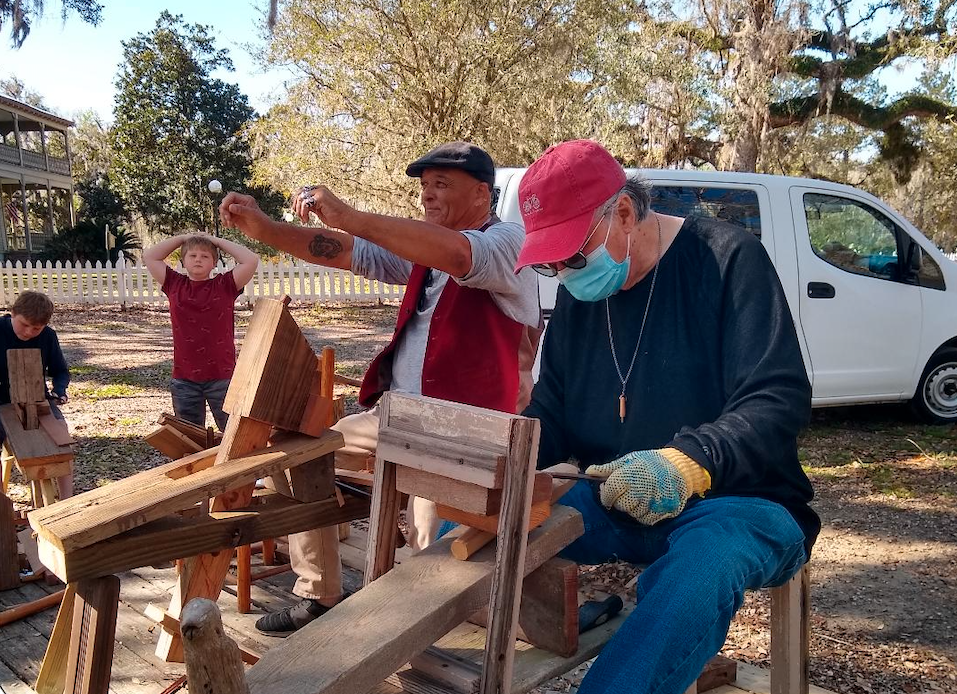This story appeared in the November issue of PRC’s Preservation in Print magazine. Interested in getting more preservation stories like this delivered to your door? Become a member of the PRC for a subscription!
The state of Louisiana and the City of New Orleans own some of the most historic structures in our state. But they aren’t required to take care of them — or even follow the same laws that govern private property owners.
Private owners face citations, fines and even property seizure when their buildings become blighted. But public bodies — including the city, the state, the Orleans Parish School Board and other government agencies — aren’t subject to the same requirements as citizens or to the same rebuke.
Any local resident can name a litany of public buildings that are shuttered or rotting. The Municipal Auditorium, the Naval Support Activity facility on Poland Avenue, schools around town — examples are plentiful.
But many people may not realize that the state owns tremendously important structures in New Orleans, including the Cabildo, the Presbytere and one row of the Pontalba buildings, and that its facility maintenance department is exempt from following the property laws that residents must follow.
This unfair standard is playing out right now at one of the most significant structures in the city: Madame John’s Legacy, at 632 Dumaine St. in the French Quarter. Built in 1788, Madame John’s Legacy is one of the oldest extant buildings in the city and one of the best remaining examples of French Colonial-style architecture. It’s a nationally significant site. But because the building is owned by the state, its renovation is exempt from following the very laws for historic buildings that the state itself enforces.
Photo 1: Plans for Madame John’s Legacy were shared by Ehlinger & Associates during a meeting on Oct. 13. Photo 2: Madame John’s Legacy photographed on Oct. 13. Photo by Nathan Lott.
Madame John’s Legacy is currently being renovated with methods not aligned with the Secretary of the Interior’s Standards for Rehabilitation, and local preservation architects and contractors are alarmed that the work could jeopardize the building’s future.
What does that mean? The Secretary of the Interior’s Standards are the guidelines used by the local Vieux Carré Commission (VCC) and Historic District Landmarks Commission (HDLC) to require private owners to follow best practices for renovations. So, the standards enforced upon residents of the Vieux Carré are actively being ignored by the state’s contractor renovating Madame John’s Legacy. How is this fair — or wise?
At a meeting with the public on Oct. 13, representatives from Ehlinger & Associates architecture firm confirmed that, though the Louisiana State Historic Preservation Office had advised them on best practices on various parts of the renovation, they were going to ignore that advice.
Because they can. This property, despite its age and historic significance, is not required to be handled with the same care as the properties surrounding it under the jurisdiction of the VCC. Nor are the architects or contractors working on it required to follow the expert advice of the staff of the State Historic Preservation Office, which oversees all private historic renovations that utilize historic rehabilitation tax credits in Louisiana.
Instead of restoring the building to one era in its history, as is best practice, the contractor and architecture firm working on Madame John’s Legacy are addressing the site’s many problems in varying ways, meaning the building’s current state of hodgepodge repairs dating to different eras will remain.
“The modifications currently underway are at odds with the Secretary of the Interior’s Standards for Rehabilitation, as per the project architect, and will irrevocably alter this last remaining example of 18th-century colonial residential architecture within the Vieux Carré,” said Bryan Block, executive director of Historic Districts for the City of New Orleans. “As such, the VCC will likely have to consider downgrading the rating of the building from Purple (National Historical/Architectural Significance) to Blue (Major Historical/Architectural Significance), although that will be determined by the commission at a public hearing.”
The project’s architecture firm acknowledged that cost was a reason why the Secretary of Interior Standards were being ignored for some repairs. But private French Quarter property owners don’t have the option to cite cost to ignore best-practice rules. They are expected to maintain their buildings to these standards, no matter the expense. And if they do not, they can face citations, fines or worse.
Why? Because this history is irreplaceable. It’s our duty to steward these priceless structures the best we can, to keep them for future generations to enjoy, and the Secretary of the Interior’s standards ensure that happens.
The City of New Orleans, as a public property owner, should also be held to the same standard as private property owners. For years, significant structures in Armstrong Park have been falling apart. Those buildings include the oldest Masonic temple in Louisiana, known as Perseverance Hall No. 4, built by Free People of Color in 1819, as well as the hall’s kitchen outbuilding, and a third structure that was the home of celebrated architect Jacques Nicolas Bussière de Pouilly, who designed St. Louis Cathedral and St. Augustine Church. Boarded up and vacant, the buildings experienced significant damage during Hurricane Ida. After the storm, the city confirmed that it had no money dedicated to repairing any of the damage or stabilizing any of the structures, despite their historic and architectural significance.
The historic Kitchen Building to the Perseverance Hall No. 4 in Armstrong Park experienced significant damage during Hurricane Ida. After the storm, the city confirmed that it had no money dedicated to repairing any of the damage or stabilizing any of the structures, despite their historic and architectural significance. Photo 1 by Nathan Lott, Photo 2 by Johann Palacios.
Since the fall of 2021, the PRC has offered to pay for the stabilization of the circa-1820s kitchen building, which lost a wall during the hurricane. Slow response time from city officials and cumbersome paperwork have meant that we have thus far been unsuccessful in performing that critical work — even though the PRC has offered to cover all costs.
These sites are but a handful of the many public-owned buildings in dire need of renovation. Even if these sites are renovated, the work does not have to comply with local historic district requirements that private citizens must obey.
It’s time for the state and the city to be held to the same standards imposed on regular property owners — for the sake of fairness, but also to ensure that the entities that own many of our city’s most precious architectural treasures are required to care for them using best practices established by professionals in the field. To do any less is just negligent.
Danielle Del Sol is the Executive Director of the Preservation Resource Center.
Advertisements




